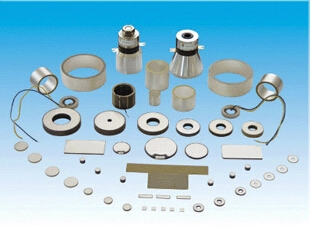Views: 79 Author: Site Editor Publish Time: 2024-06-05 Origin: Site
A focused ultrasound transducer is an advanced device that uses ultrasound energy for non-invasive treatment and diagnosis. By focusing ultrasound waves to a specific small area, this transducer can accurately deliver high energy without damaging surrounding tissues, and is used in a variety of medical applications, including tumor ablation, pain management, thrombolysis, and image enhancement.
Focused ultrasound technology combines the principles of acoustics and medical engineering to provide a safe, efficient, and repeatable treatment method that is constantly changing the face of modern medicine.
HIFU, short for High-Intensity Focused Ultrasound, is a medical technology that uses focused high-energy ultrasound waves to treat tumors and other diseases. HIFU technology focuses sound wave energy into a small area in the human body, generating high temperatures or mechanical effects, thereby destroying or killing abnormal cells in the tissue without damaging surrounding healthy tissue.
How HIFU works
Sound wave generation: The HIFU system generates high-frequency sound waves.
Sound wave propagation: These sound waves propagate through the skin and other tissues.
Sound wave focusing: The HIFU system uses special transducers to focus sound waves into a small target area.
Energy conversion: At the focus point, the energy of the sound waves is converted into heat or mechanical effects.
Therapeutic effects: High temperatures can destroy tumor cells, or the mechanical effects of sound waves can directly damage cell membranes, causing cell death.

Applications of HIFU
Facial Lifting: HIFU generates heat deep in the skin through focused ultrasound, stimulating the regeneration and remodeling of collagen, thereby lifting and tightening the facial skin.
Fat Burning: HIFU generates heat in fat tissue through high-energy focused ultrasound, causing fat cells to be damaged and gradually absorbed and metabolized by the body.
Tumor treatment: HIFU is commonly used to treat benign and malignant tumors, such as breast cancer, prostate cancer, uterine fibroids, etc. HIFU technology can precisely destroy tumor cells without surgery.
Pain management: HIFU can also be used to treat chronic pain, such as pain caused by bone tumors. By destroying pain-sensing nerve fibers, pain symptoms can be relieved.
Vascular disease treatment: HIFU can be used to treat vascular diseases such as hypertension and varicose veins.
Advantages:
Non-invasive: No surgical incision is required, reducing infection and recovery time.
Accuracy: Ability to accurately target and treat tumors without damaging surrounding healthy tissues.
Repeatability: The treatment process can be repeated and is suitable for multiple treatments.
Challenges:
Depth limitation: The penetration depth of ultrasound is limited, which affects the treatment effect on deep tissues.
Monitoring and control: Accurately controlling and monitoring temperature changes during treatment is a technical difficulty.
As an innovative medical technology, HIFU is gradually becoming an important means of tumor treatment and other disease treatments, and has broad prospects for future clinical practice.
Application requirements: Determine what kind of application you plan to use the ultrasonic transducer in. Different applications may require different types of transducers, such as medical imaging, therapy, material processing, etc.
Frequency: The frequency of the ultrasonic transducer affects its performance in a specific application. Low-frequency transducers are suitable for deep tissue imaging and therapy, while high-frequency transducers are suitable for shallow tissue imaging and high-resolution imaging.
Focal length: The focal length determines the focal depth and diameter of the ultrasound. Selecting a transducer with the appropriate focal length ensures clear imaging or treatment effects in the required area.
Output power: For therapeutic applications, output power is an important consideration. Make sure the selected transducer can provide enough power to achieve the desired therapeutic effect.
Durability and reliability: The transducer should have sufficient durability and reliability to ensure stable operation over a long period of time and will not be damaged due to frequent use.
Weifang Jude is a leading enterprise specializing in the manufacture of focused ultrasound transducers. Headquartered in Weifang, Shandong, China, the company has advanced production equipment and a technical team dedicated to providing high-quality products and solutions for the global medical market.
As a professional manufacturer of focused ultrasound transducers, Jude focuses on technological innovation and product quality control. The company has a high-quality R&D team and cooperates with many well-known medical institutions and research institutions at home and abroad to continuously promote the upgrading and innovation of product technology to meet the needs of the evolving medical market.
With "professionalism, innovation, quality and service" as its core values, Jude is committed to becoming a leading brand in the field of global focused ultrasound transducers and making greater contributions to the cause of human health.
